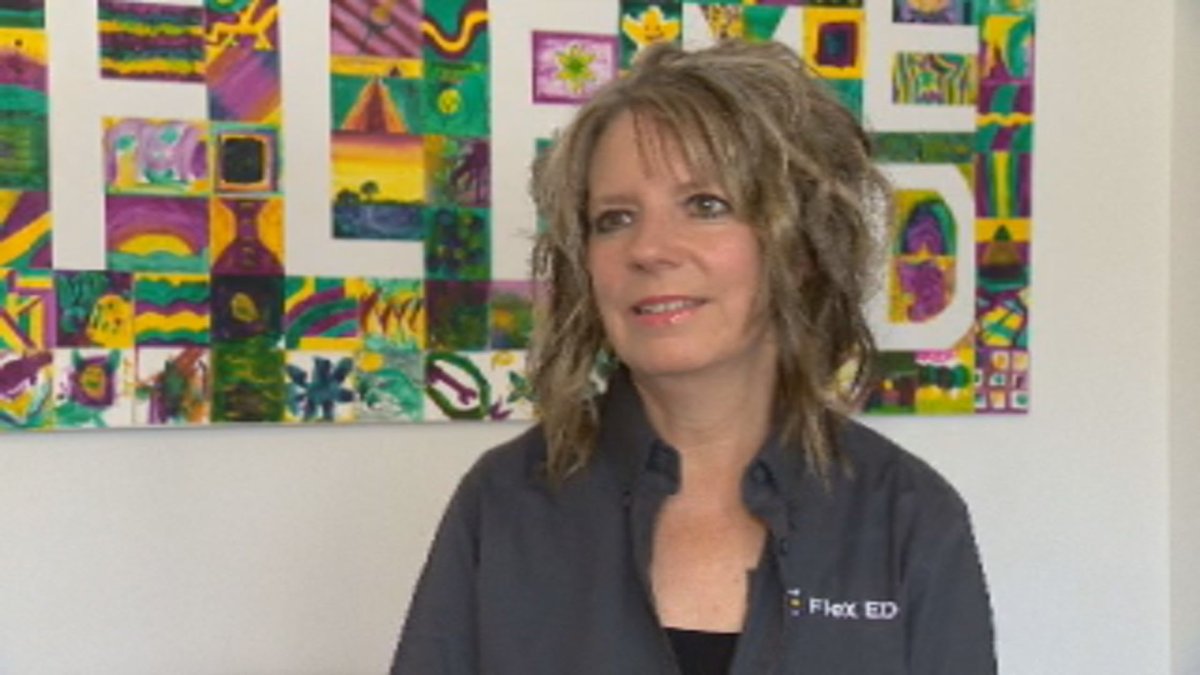Correction: An earlier version of this story said Regina Catholic Schools used Flex Ed to deliver distance learning to high school students. That is not correct. Regina Catholic Schools uses a flexible online learning system of its own and the story has been changed to reflect that.

More and more parents are considering online learning as an option for their children this fall — but it’s not as simple as setting them up at a computer.
Experts say there’s a lot of planning that has to happen in order to succeed at virtual schooling, especially for young students.
“We know about online learners,” says Ann Cook, principal of Flex Ed, which has been delivering Saskatchewan’s curriculum online since 2005. “We know they need consistency.
“They need communication and they need lots of it. And they need structure.”
Flex Ed — which is independent, but tuition-free — has seen enrollment skyrocket from 300 students in the 2019-20 school year to more than 900 students registered for 2020-21. While it’s still accepting high school applicants, there’s a waiting list for Kindergarten to Grade 9 programming.
Cook says that while Flex Ed has the virtual infrastructure in place, it wants to ensure that the student-to-teacher ratio remains at a manageable 40:1.
- Life in the forest: How Stanley Park’s longest resident survived a changing landscape
- ‘Love at first sight’: Snow leopard at Toronto Zoo pregnant for 1st time
- Buzz kill? Gen Z less interested in coffee than older Canadians, survey shows
- Carbon rebate labelling in bank deposits fuelling confusion, minister says
In an online environment, there aren’t the same classroom management issues, she notes. Even at a ratio of 40:1, students report stronger connections with their teachers, quite possibly due to managed one-on-one interactions.
To keep up with the heightened demand, Flex Ed has been hiring and training new teachers for months.
“We want to be really careful about our growth and make sure we’re not sacrificing our strengths,” Cook says.
Alec Couros, an educational technology professor at the University of Regina, says there are major differences when it comes to delivering a curriculum in the classroom of a brick-and-mortar school compared to online.
“Building instructor presence, developing ways for students to socialize in real and meaningful ways — those particular tasks, just by themselves, take a lot of human resources,” he says.
While Regina Catholic Schools has provided a distance learning option for high school students for years, there has been increased interest from elementary school families, says online principal Amy Sanville, noting there have already been 150 elementary enrollments .
Sanville also emphasizes consistency, communication and structure as key to succeed.
“Students will be expected to login in the morning, connecting with their teachers and their classmates throughout the day,” she says.
For young students, parental involvement is critical, these experts say.
Having a Mac or PC desktop or laptop, printer/scanner and good internet connection are all important elements, Cook says.
She suggests setting up a workspace for your child doing online learning, making a schedule and liaising with your child to ensure your child is liaising with their teacher.





Comments